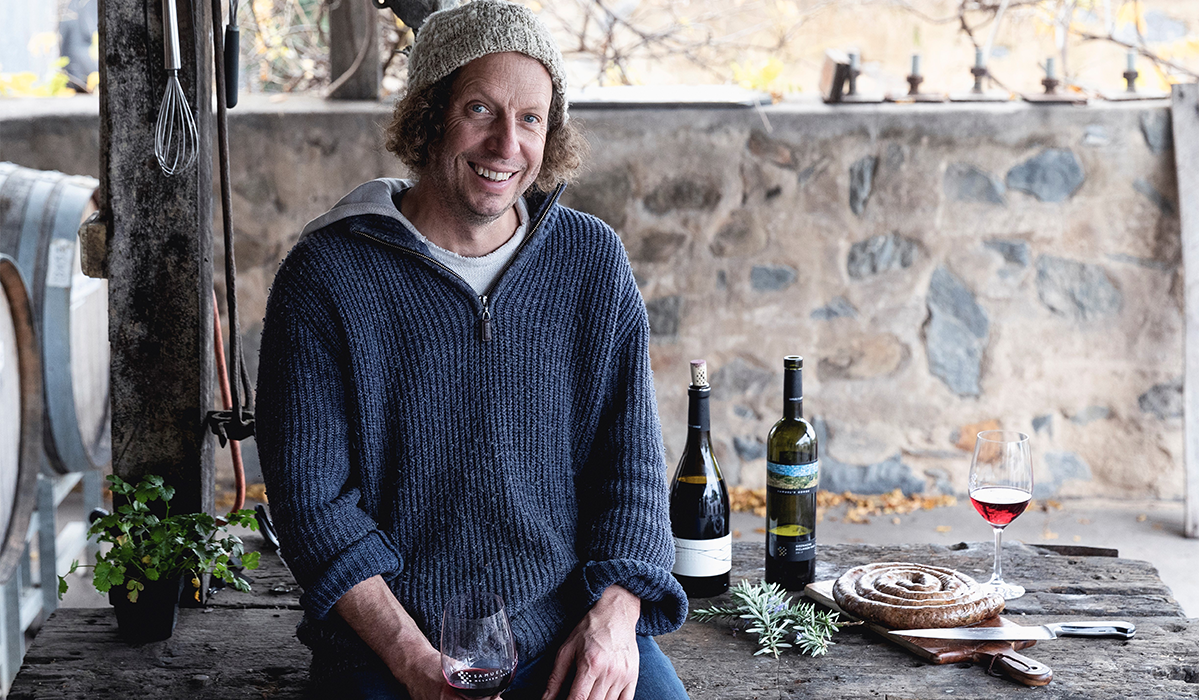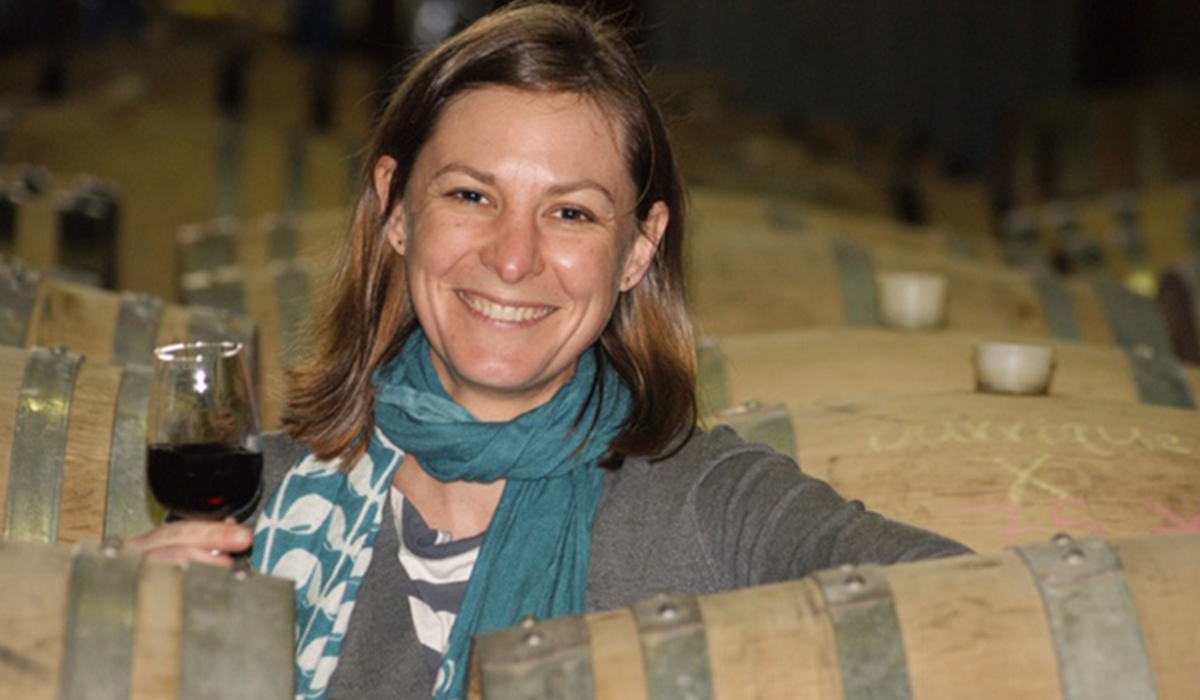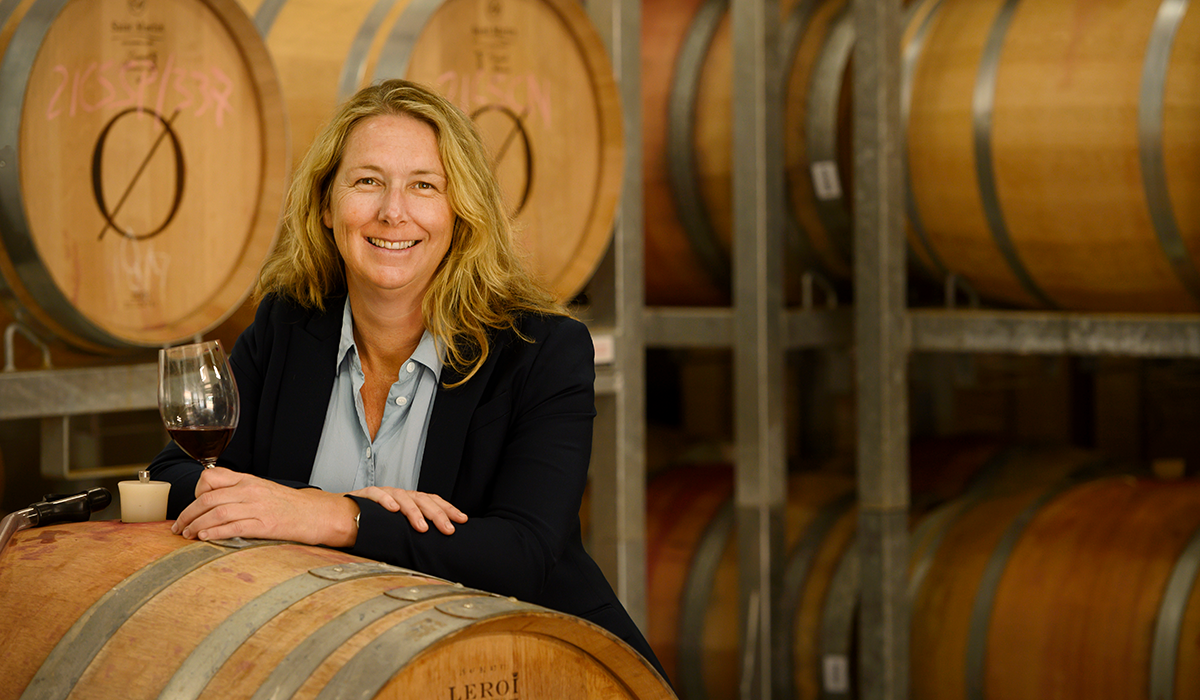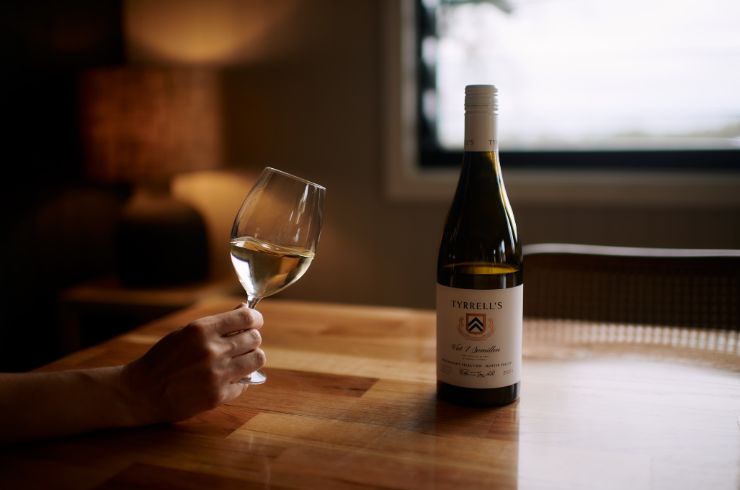Tempranillo, made famous in Spain's Rioja, is slightly harder to come by in Australia. But as these five winemakers will tell you, its demand is growing. We spoke to Weathercraft Wine's Raquel Jones, Samuel Gorge's Justin McNamee, Plan B! Wines' Vanessa Carson, Oates Ends' Cath Oates and Clarnette's Leigh Clarnette about why they love producing tempranillo, and how they approach the winemaking process.
Raquel and Hugh Jones – Weathercraft Wine, Beechworth VIC
H. What do you love about tempranillo?
R. I love the flavour spectrum of this variety. Younger, early release wines are fruit-forward with juicy red fruits, while aged tempranillo is often broodier, and filled with with black fruits and plenty of tertiary characteristics. At Weathercraft we make two traditional styles of tempranillo, a young (Joven) juicy style and an aged reserve style. I grow three Ribera del Duero clones – distinctly different to other clones previously grown in Australia. The clone for the joven tempranillo imparts red cherry and cranberry fruits with gentle acidity and soft tannins, allowing wild fermentation, greater time on skins and using minimal new oak and ageing time maintains fruit freshness and flavour.
H. How do you approach the winemaking process, and has it evolved or changed?
R. Our wines are fruit-forward, mid-weight elegant expressions of the grape variety. I put my heart and soul into growing the best fruit I can, and I never want to un-do what nature has done. In the winery, I let the fruit shine with minimal intervention and gentle techniques, such as cold-soaking, wild fermentation and hand-plunging. All three Ribera tempranillo clones were specifically chosen to suit our vineyard’s mesoclimate, soil type and orientation. Each vintage is unique, but as I’ve become better acquainted with these clones, and the vines have found their feet, the quality and expression of the variety has improved year on year.
H. How should this wine be served?
R. In Spain joven tempranillo is served slightly chilled in warmer months, and while refreshing, you miss out on the complexity within the glass. Our Tempranillo J is best enjoyed at room temperature after decanting (to give the Spaniard some air) you'll be rewarded with an incredibly lush bouquet.
Justin McNamee – Samuel's Gorge, McLaren Vale SA
H. What do you love about tempranillo?
J. The undulating landscape of McLaren Vale, with its dry summers and maritime influences create great growing conditions for tempranillo. This grape is at home here and the resulting wine pairs well with our laidback coastal lifestyle. We use grapes from two dramatic windswept vineyards. These are fermented in our outdoor winery, under the verandah of a barn built in 1853. Our interpretation of tempranillo is inspired by the traditional Spanish style, yet still far removed, with minimal influence of new oak, we have worked hard to create a style that will age beautifully but one that also shines in its youth.
H. How do you approach the winemaking process, and has it evolved or changed?
J. The winemaking process begins in the vineyard with the cultivation and maintenance of healthy vines. In the winery we look at the bigger picture and really consider how the wine will be enjoyed down the track, this influences all decisions we make. We strive to craft a wine that is nuanced and expressive by utilising indigenous yeast and ensuring our ferments are long and slow. These patient techniques help create wines that are driven by aromatics and chalky tannin. Winemaking is a peasant skill – it's hands on, agricultural and dependent upon the seasons. The connection with the land around us and the flavours that are developed from it are what make winemaking so varied and fascinating. The general fermentation process has not changed too much over the years, but we are always learning and adapting with each harvest. From our first tempranillo release in 2004 we have honed our skills and actively focus on making tempranillo that showcases the year that was.
H. How should this wine be served?
J. This vibrant, expressive wine is best enjoyed with good food and great friends. It’s as easy as that.
Vanessa Carson – Plan B! Wines, Geographe WA
H. What do you love about tempranillo blended with viognier?
V. The Ferguson Valley is gaining popularity as the 'alternative variety' capital of Western Australia and tempranillo is one of those alternative varieties that has found its niche there. The growing climate sees the vines thrive giving delightfully concentrated fruit flavours with fine, chalky tannins. We're having a lot of fun playing with different clones of tempranillo too. I guess the most noticeable feature of our wine is its approachability and the fact we add a small portion of viognier (usually 2%) to the blend. The viognier helps concentrate the fruit on the front palate and also enhances the aromatics.
H. How do you approach the winemaking process, and has it evolved or changed?
V. I really like the fruit concentration in our tempranillo, and its balance with those unique characteristic tannins. I think the tannins can at times be a little aggressive if allowed to be, so that is something I am very conscious of when we're fermenting and maturing the wine. I am constantly looking at how those tannins are forming and being extracted, we make our cap management based on what is happening with those tannins. We have started looking at the various clones of tempranillo becoming available in WA. Up until a few years ago the only clone available was the Requena, which is a very good in itself, but I think it’s important to see what else is out there and what differences other clones can bring. That, along with treating the tannins with respect and recognising how unique they are to this variety has kept our tempranillo learning journey very interesting.
H. How should this wine be served?
V. It’s probably not the first variety one will reach for on a summer day, that said, it should certainly be considered when the weather just starts to turn. It's a variety that can have a slightly higher alcohol (13–14.5%), so don’t be afraid to pop it in your fridge for 15 mins before opening. We drink our reds far too warm in Australia.
Cath Oates – Oates Ends, Margaret River WA
H. What do you love about tempranillo?
C. It’s such a generous variety when grown here, no matter the ripeness at harvest, it always has lovely red or black fruits. I’ve enjoyed finding our own style from what works best in the vineyard. It's always fun playing around with it. We also use sheep in the vineyard during the growing season as a sustainable management tool. The sensible mums are put back in to do the leaf plucking for us, removing leaf from the fruit area to ensure maximum airflow and perfect bunch exposure. They’re well trained now and leave the green bunches alone.
H. How do you approach the winemaking process, and has it evolved or changed?
C. It's very much a vineyard-lead style. Our maritime climate brings the acidity down quickly during ripening, so we harvest relatively early, then handle the grapes very carefully in the winery to ensure the gentle extraction of tannins. It really suits my style – I love wines that are aromatic and fresh, never heavy or dry. Growing and making tempranillo in Margaret River is a continual evolution. Every year I’m playing around with balancing my picking date for fruit ripeness and tannin development, while retaining natural acidity. In the winery I’m experimenting with barrel size and age – finding the right balance for each new vintage.
H. How should this wine be served?
C. My tempranillo is really made to enjoy with friends and is brilliant for a barbecue. It's light enough to enjoy by the glass, or with food. During summer you can even lightly chill it for extra freshness and aromatics. We enjoy pairing it with homegrown lamb from the farm, but I also quite like it with chocolate-based desserts.
H. What do you love about tempranillo?
L. I first encountered McLaren Vale styles 10 years back, some were faint and some were blended with shiraz. They impressed me, offering a zingy freshness that no other red wine has. We only have only access to small parcels so small open fermenters and light pressing works. Our process is a light oaking in older, two and three-year-old barrels and then we bottle early. I'm now using more vegetable proteins, which seem to enhance the fresh fruit flavours.
H. How do you approach the winemaking process, and has it evolved or changed?
L. Put simply it's about the freshness of the grapes, before they get anywhere near jamy. I use a yeast that matches that, and keep ferment coolish. I'm always looking for fresh pomegranate and spice, along with blueberries. Looking back over the past four years – hot years produce fast ripening and lower yields, many of which have more tannin – in those years I'm gentler on final pressing, and once again those vegetable proteins provide a lot of freshness.
H. How should this wine be served?
L. For me this is a luncheon red serve it in big glasses just like pinot noir. It just bellows fruit from the glass – paired with any red meat, charcuterie, or a myriad of soft aged cheeses (give me a blue Stilton any day!) – you'll be hooked.
Learn more about tempranillo in our essential guide.
This article was produced by Halliday Wine Companion in partnership with the featured wineries.
Top image credit: Weathercraft Wine








